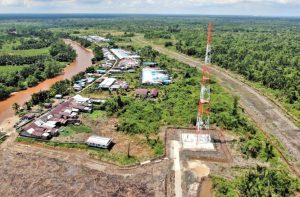Home News 72 million rural inhabitants lack connectivity in region – IICA study
At least 72 million rural inhabitants of Latin America and the Caribbean lack access to connectivity services with minimum quality standards.
This conclusion came from the findings of a study titled “Rural Connectivity in Latin America and the Caribbean: Current situation, challenges and actions to reach digitalisation and sustainable development”, conducted by the Inter-American Institute for Cooperation on Agriculture (IICA); the World Bank; Bayer; CAF Development Bank of Latin America; Microsoft and Syngenta.
 The new document is an update to the data recorded by IICA in October 2020 titled “Rural Connectivity in Latin America and the Caribbean – a bridge to sustainable development during a pandemic”.
The new document is an update to the data recorded by IICA in October 2020 titled “Rural Connectivity in Latin America and the Caribbean – a bridge to sustainable development during a pandemic”.
This latest report highlights that access to meaningful connectivity in rural areas increased by 12 per cent compared to 2020. At that time, approximately 77 million people lacked access to this essential service.
Figures show that 79 per cent of the urban population has access to meaningful connectivity services when compared to 71 per cent two years ago. Their rural counterparts meanwhile have only 43.4 per cent coverage.
The data confirms that there is a persistent gap in rural areas that calls for decisive action and innovative solutions.
Brazil is in the same cluster as Argentina, Barbados, Bahamas, Belize, Costa Rica, Chile, Panama, Trinidad and Tobago and Uruguay, representing 24 per cent of the sample of the rural population.
Of the countries in this group, Barbados and Belize are making the biggest progress from 2020, while connectivity also improved significantly in Argentina, Costa Rica, Trinidad and Tobago and Uruguay, by some 30 per cent.
Countries that are not doing so well include Colombia, Ecuador, El Salvador, Jamaica, Mexico, Peru, the Dominican Republic, Paraguay and Suriname, who have a medium-high rural connectivity index at 46 per cent of the rural population sample. Peru, Mexico, and Honduras showed the greatest progress in the percentage of rural residents who improved their connectivity conditions.
Guyana is on the lower end of the bracket with Bolivia, Guatemala, Haiti, Honduras, Nicaragua and Venezuela, where there was a representation of 30 per cent of the sample of the rural population.
 The new document is an update to the data recorded by IICA in October 2020 titled “Rural Connectivity in Latin America and the Caribbean – a bridge to sustainable development during a pandemic”.
The new document is an update to the data recorded by IICA in October 2020 titled “Rural Connectivity in Latin America and the Caribbean – a bridge to sustainable development during a pandemic”.